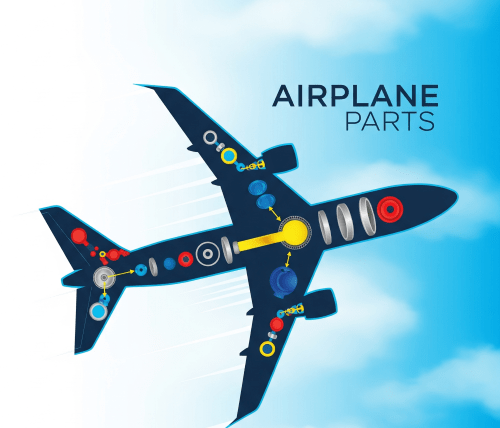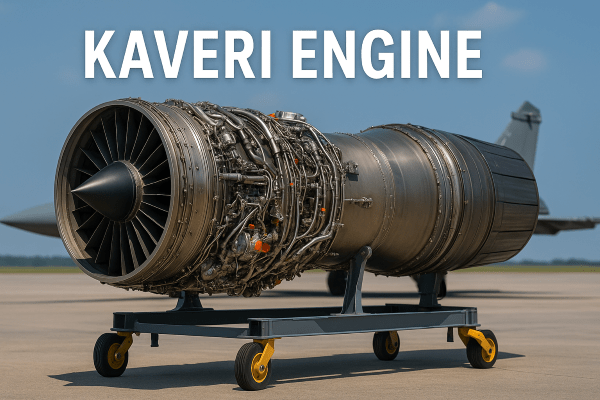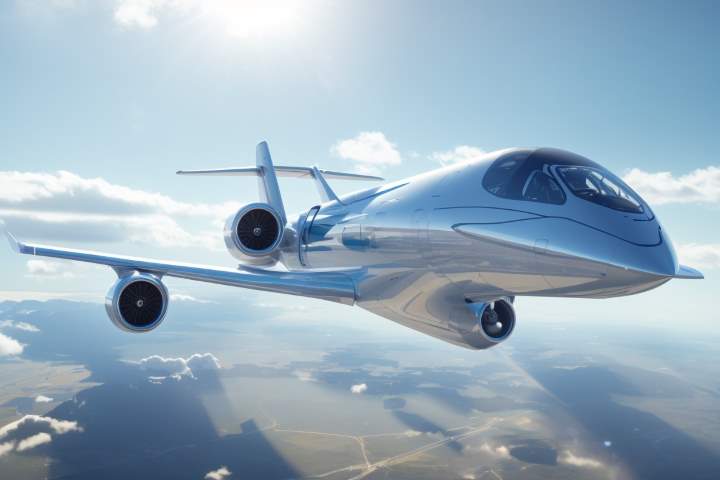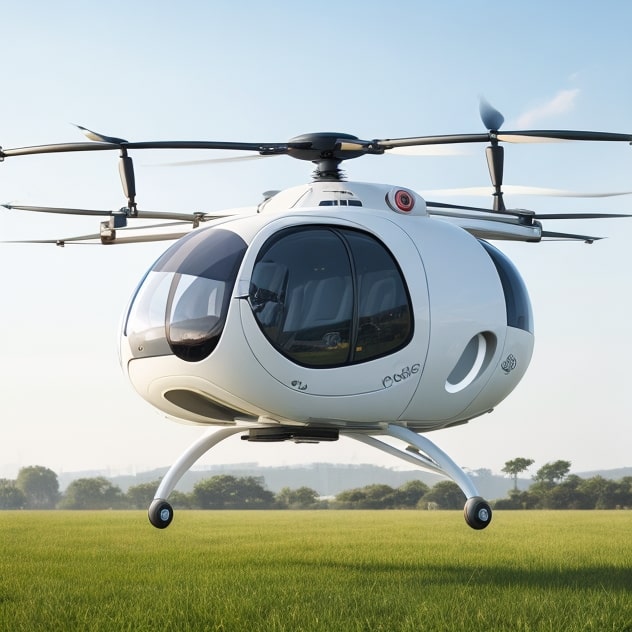Airplanes are marvels of engineering, designed to soar through the skies with accuracy and reliability. Understanding the parts of airplane and their functions is main key to appreciating how these complex machines work. In this blog, we’ll explore the main components of an airplane, diving into their roles, from the airplane wing structure to the aircraft landing gear types. Whether you’re an aviation enthusiast or just curious, this article will break down the essentials in a clear, engaging and easy way.
Table of Contents
What Are the Main Components of an Airplane?
Every airplane is a carefully assembled system of parts working together to achieve flight. The main components of airplane include the fuselage, wings, empennage, landing gear, and powerplant. Each plays a unique role in ensuring the aircraft’s performance, safety, and stability. Let’s explore these components and their functions in detail.
1. Airplane Fuselage Design: The Backbone of the Aircraft

The airplane fuselage design serves as the central structure, housing passengers, cargo, and critical systems. Think of it as the body of the airplane, providing structural integrity and connecting other components like the wings and tail.
- Functions of Airplane Fuselage:
- Structural Support: The fuselage holds the aircraft together, distributing stress and maintaining shape during flight.
- Housing: It contains the cockpit, passenger cabin, and cargo holds in commercial planes.
- Aerodynamics: Its streamlined shape reduces air resistance, improving fuel efficiency.
The fuselage is typically made of lightweight yet strong materials like aluminum or composite materials, ensuring durability without compromising weight. Understanding the functions of airplane fuselage highlights its critical role in aircraft design.
2. Airplane Wing Structure: The Key to Lift

The airplane wing structure is responsible for providing lift, the force that allows an airplane to take off and stay airborne. Wings are carefully designed with specific shapes and features to enhance performance.
- Airplane Wing Parts:
- Leading Edge: The front of the wing, designed to cut through the air smoothly.
- Wing Skin: The outer surface, often made of aluminum, contributing to lift and structural integrity.
- Spars and Ribs: Internal components that provide strength and shape to the wing.
- Flaps and Slats: Movable surfaces that adjust lift and drag during takeoff and landing.
The airplane wing parts work together to ensure efficient lift and maneuverability. For example, flaps extend during landing to increase lift at lower speeds, while slats improve airflow over the wing.
3. Aircraft Control Surfaces Explained: Steering the Skies

Aircraft control surfaces explained simply: these are movable parts on the wings and tail that allow pilots to control the airplane’s direction and attitude. They are essential for maneuvering and maintaining stability.
- Key Control Surfaces:
- Ailerons: Located on the wings, ailerons control roll, allowing the plane to tilt side to side.
- Elevators: Found on the tail, elevators control pitch, adjusting the nose up or down.
- Rudder: Also on the tail, the rudder controls yaw, helping the plane turn left or right.
- Flaps: While primarily for lift, flaps also assist in controlling descent during landing.
These airplane control systems are operated from the cockpit, often through a combination of manual inputs and automated systems, ensuring precise navigation.
4. How Airplane Landing Gear Works: Safe Takeoffs and Landings

The landing gear is a critical system that supports the airplane during takeoff, landing, and ground operations. Understanding how airplane landing gear works reveals its importance in safety and functionality.
- Types of Airplane Landing Gear:
- Tricycle Gear: Features a nose wheel and two main wheels, common in most commercial aircraft for stability.
- Tailwheel Gear: Has a rear wheel,喧
System: tail, often used in smaller planes, offering maneuverability on rough terrain.
- Retractable vs. Fixed Gear: Retractable gear tucks into the fuselage during flight to reduce drag, while fixed gear remains extended.
- Functions:
- Shock Absorption: Absorbs impact during landing to protect the aircraft.
- Braking and Steering: Wheels often include brakes and steering mechanisms for ground navigation.
The types of airplane landing gear vary based on the aircraft’s size and purpose, with larger planes using complex retractable systems and smaller ones opting for fixed gear.
5. Airplane Engine Components: The Powerhouse

The airplane engine components form the heart of the aircraft’s propulsion system, generating the thrust needed for flight. Engines vary depending on the aircraft type, from piston engines in small planes to jet engines in commercial airliners.
- Key Engine Components:
- Compressor: Draws in and compresses air for combustion.
- Combustion Chamber: Mixes fuel with compressed air and ignites it to produce energy.
- Turbine: Extracts energy from the combustion gases to drive the compressor and other systems.
- Nozzle: Directs exhaust gases to create thrust.
Modern jet engines, like turbofans, are designed for efficiency and power, with intricate airplane engine parts working together to propel the aircraft at high speeds.
6. Airplane Cockpit Instruments: The Pilot’s Command Center

The airplane cockpit instruments provide pilots with critical information to navigate and operate the aircraft safely. The cockpit is a hub of technology, combining analog and digital systems.
- Key Instruments:
- Altimeter: Measures altitude above sea level.
- Airspeed Indicator: Shows the aircraft’s speed relative to the air.
- Attitude Indicator: Displays the plane’s orientation (pitch and roll).
- Navigation Systems: GPS and radio navigation systems guide the plane along its route.
These instruments, part of the airplane control systems, ensure pilots can monitor and control the aircraft’s performance in real-time.
7. Airplane Structural Components: Holding It All Together

Beyond the fuselage, airplane structural components include various elements that maintain the aircraft’s integrity under extreme conditions.
- Examples:
- Stringers and Frames: Reinforce the fuselage and wings, providing rigidity.
- Bulkheads: Divide the fuselage into sections, enhancing strength.
- Skin: Covers the aircraft, contributing to aerodynamics and protection.
These components are designed to withstand high stresses, ensuring the aircraft remains intact during flight.
Which Seat Is Safest on an Airplane?
Ever wondered where to sit on a plane to be the safest? While flying is already super safe, some studies have shown that certain seats might give you a better chance in a rare emergency. Here’s what the data says:
- Back of the plane is safer – Seats behind the wings (near the tail) had fewer fatal accidents compared to front or middle seats.
- 📊 A big study found:
- Back seats = 32% fatality rate
- Middle seats = 39%
- Front seats = 38%
- 💺 Aisle seats at the back are slightly better than window seats in some cases.
But remember:
- ✈️ Air travel is one of the safest ways to travel.
- Being alert helps! Always:
- Watch the safety demo.
- Keep your seatbelt on while seated.
- Know where the nearest emergency exit is.
- Leave bags behind in an emergency.
Rear fuselage (last rows) showed a 62–70% survival rate in select crash reviews.
While the back seats may have a slight edge in some studies, the truth is—no matter where you sit, staying calm, alert, and prepared is your best safety advantage!
👉 If you love to read this, try to read new once Rafale vs Kaveri Engine
Why Understanding Airplane Parts Matters
Learning about the parts of an airplane offers insight into the complexity of aviation. Each component, from the airplane wing structure to the aircraft landing gear types, plays a vital role in ensuring safe and efficient flight. Whether you’re a student, a professional in the aerospace industry, or simply fascinated by flight, this knowledge deepens your appreciation for the engineering behind every takeoff and landing.





